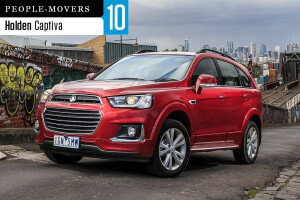Latest Review
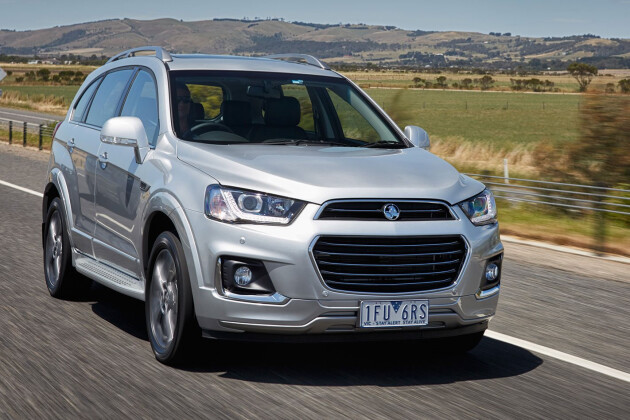
2016-2018 Holden Captiva Range Review
Everything you need to know about the Holden Captiva large SUV, including pricing and features
What stands out?
Holden’s Captiva is a large SUV that is priced near many mid-sizers, which places it among the least costly wagons that offer seven seats. It has effective turbo-diesel and V6 petrol engines, a high level of standard equipment, and smartphone integration via Apple CarPlay and Android Auto.
The Captive was replaced by the Acadia in October 2018, resulting in sharp run-out pricing for the three remaining Active, LTZ V6 and LTZ diesel variants. Newer Captivas are also available as used-car bargains, so this review includes all 2016-2018 variants, including those no longer available as new by November 2018.
What might bug me?
Perhaps concerns about safety for the rearmost passengers. Head-level curtain airbags protect passengers in front and second-row seats from side impacts, but do not cover those in the third row.
Driving after a puncture. A spare tyre is only optional, and it is narrower than the other tyres on the car – which limits the recommended top speed to 80km/h if you need to use it. If you do not option the spare tyre there is a standard repair kit. If buying a used Captiva be sure to check whether or not it has a spare tyre.
What body styles are there?
Five-door SUV-style wagon only. All seat seven. (Previously, the least costly of the LS variants seated only five.)
The Captiva comes in front-wheel drive and all-wheel drive versions.
It is classified as a large SUV, lower priced.
What features do all Captivas have?
A 7.0-inch touchscreen, with connectivity for mobile devices via Bluetooth. Holden’s MyLink, with Apple CarPlay and Android Auto (which allows you to operate your phone and use some of its apps, among them navigation apps, from the touchscreen). Steering wheel and voice controls for your phone and the sound system.
Cruise control and a leather-wrapped steering wheel, adjustable for height and reach. Headlamps which switch on automatically at night or in tunnels.
Automatic transmission, and seating for seven.
Dual-zone air-conditioning (which allows the driver and front passenger to set temperatures independently). Windows tinted to reduce sun penetration. Daytime running lamps illuminated by power-efficient LEDs, which make you more visible to other drivers.
Smart key entry, which allows you to unlock the car by pressing a button on any door provided that the key is nearby (for example, in a pocket or bag).
A reversing camera, and rear parking sensors.
Aluminium alloy wheels (they are lighter and more stylish than steel wheels).
Six airbags. Anti-lock brakes, and electronic stability control - which can prevent or help control a skid. (For the placement of airbags, and more on Captiva safety features, please open the Safety section below.)
Captivas sold after July 2018 are covered by a five-year unlimited kilometre warranty. Prior to that the Captiva was covered by a three-year, 100,000km warranty.
Which engine uses least fuel, and why wouldn't I choose it?
The 2.2-litre turbocharged diesel engine is the most fuel-efficient, consuming as little as 8.5 litres/100km in official tests (urban and country combined) with its mandatory auto gearbox.
For power, the diesel occupies the middle ground between the hard-pressed 2.4-litre petrol engine that is the only alternative in the Captiva LS, and the more sophisticated 3.0-litre petrol V6 available in the Captiva LT and LTZ.
One reason you might not get the diesel in an LS is that it costs more to purchase and to service than the 2.4 petrol. But it is better to drive.
A reason why you might not get the diesel in an LT or LTZ is that it also costs more to purchase than the petrol V6 available in those models, which arguably is a better powerplant for the Captiva.
The V6 is smoother and more powerful. But it uses about 25 per cent more fuel than the diesel even in the official tests, and the difference will be greater if you access its extra acceleration around town, in hilly terrain or when towing.
A V6 Captiva LT AWD averaged 14.4 litres/100km in a real-world comparison of seven-seat SUVs conducted for the October 2016 issue of Wheels magazine, making it the least fuel-efficient of 10 cars reviewed.
The petrol Captiva LS is available in front-wheel drive, five-seat form with a six-speed manual gearbox. A six-speed auto gearbox is optional.
All other Captivas come only with a six-speed automatic gearbox.
(Power outputs and all other Holden Captiva specifications are available from the Cars Covered menu, under the main image on this page.)
What key features do I get if I spend more?
Spending as little as possible on a Captiva will get you a Captiva LS, with cloth seat trim, 17-inch wheels, and the 2.4-litre petrol engine, driving the front wheels only. Spend more and you can have the stronger diesel engine.
For about the same price as an LS diesel, you could choose instead a special edition LS Active. It comes only with the 2.4 petrol engine but adds some luxury features, namely part-leather seat trim, roof rails, a power-opening sunroof, and 18-inch wheels with lower-profile tyres (which arguably look sportier). Again, only the front wheels are driven.
Spending more again for a Captiva LT brings you all-wheel drive and the option of specifying the more powerful V6 petrol engine (or the diesel). Like the LS Active, the LT has 18-inch wheels, roof-rails, and a sunroof. The seat trim reverts to cloth, however.
The most expensive Captiva, the LTZ, has 19-inch wheels fitted with tyres of an even lower profile. Seat-trim returns to part-leather, with the front seats heated and the driver’s seat power adjustable. Parking sensors have been added at the front. The LTZ also gains two active safety features: a blind spot alert, which warns of other vehicles alongside out of view, and a rear cross-traffic alert, which helps you avoid carpark bingles.
By the time the Captiva entered its runout phase in October 2018, only the Active, LTZ V6 and LTZ diesel were available from Holden showrooms.
Did any upgrade have a down side?
The ride in an LTZ is slightly less comfortable than in other models because of its big, low-profile tyres. Those tyres could also cost more to replace.
White and red were the only standard colours, with all others costing extra.
How comfortable is the Captiva?
Some drivers might prefer bigger numerals on the speedo and tacho, but most controls in the cabin are easy to reach and use.
While most new cars have audio controls on the steering wheel, the Captiva also has ventilation controls, further reducing the need to take a hand off the wheel.
Up front the seats don’t have much lateral support, which can have you sliding around through corners. But the seat bases are quite long, for decent under-thigh support.
The large-diameter leather-wrapped steering wheel feels unwieldy at first and yet the steering is still quite heavy around town and when parking. However, the weighting helps it feel responsive and reassuring at freeway speeds.
Firm suspension on the Captiva means you feel bumps more than you would in most other vehicles of this size and weight.
Grumbling from the four-cylinder diesel engine when it is idling intrudes into the cabin, which is a quiet place otherwise. The four-cylinder petrol is smoother but gets noisy when driven hard. The V6 is the smoothest engine of the three.
What about safety in a Holden Captiva?
Anti-lock brakes, stability control, six airbags, a reversing camera, auto-on headlights, and LED daytime running lights (which help other drivers see you), are part of the safety package on all Captivas.
There are two airbags directly in front of the driver and front passenger; side airbags to protect the two front occupants at chest level from side crashes; and side-curtain airbags running alongside the front and middle-row seats, which protect heads from side impacts.
The curtain airbags protecting the heads of front and rear passengers do not cover those in the third row of seats, however.
The Captiva LTZ (only) has a blind-spot alert, which warns you if another car is alongside when you prepare to change lanes. And its rear cross-traffic alert adds some safety when backing out of parking spaces, by letting you know if a car is about to cross behind you.
Autonomous emergency braking is not available on any Captiva.
The Australasian New Car Assessment Program (ANCAP) rated front-drive versions (only) of the Captiva at its maximum five stars for safety in December 2011, when it was named the Captiva 7.
I like driving - will I enjoy this car?
The four-cylinder petrol engine is short on power for propelling such a big car. You may find yourself pushing the accelerator pedal a long way just to keep up with traffic in a petrol Captiva LS or LS Active. That can also keep the transmission busy, as it changes gears frequently in an attempt to maximise acceleration.
Throw in high noise levels when you drive it hard and this is the least satisfying engine on offer.
The diesel engine, available in all Captivas, feels noticeably stronger when climbing hills or carrying a full load. It takes a moment or two to develop power when you accelerate from a standstill.
The V6 petrol available in a Captiva LT or LTZ feels more enthusiastic and delivers the best performance. Nevertheless it is short on grunt when you first press the accelerator at cruising speeds, needing to be spun fairly hard before satisfying acceleration arrives.
The bigger tyre and wheel combinations provide more grip and cornering accuracy. However in all versions there is mild kickback from the steering if you encounter bumps in the middle of a corner.
All-wheel drive versions of the Captiva are light-duty off-roaders designed mainly for on-road use. Should you venture off road without the optional spare tyre, you could be left with a puncture that is not repairable with the supplied repair kit.
How is life in the rear seats?
The middle row seats offer plenty of head and leg room for adults. And having an almost flat floor and wide centre seat means getting three adults across the rear is not the compromise it can be in some other big SUVs.
In the rearmost seats, space is harder to find – particularly for big feet, which don’t fit easily under the seat in front. Head room here is better suited to children than adults, although knee room isn’t too bad, albeit with adult knees forced quite high due to the raised rear floor.
As with many big SUVs, the three child-seat anchor points are set up for the middle row of seats. That makes it hard to get people into the third row of seats when the child seats are fitted.
How is it for carrying stuff?
With all seven seats in use, the remaining boot space is tiny: expect to fit a couple of soft overnight bags.
With the third row seats folded, the boot floor is fairly high but broad and long, making it good for prams or plenty of luggage.
The floor also matches up with folded middle row seats to create a long, flat cargo area behind the front seats if required.
The middle row seats split-fold 60/40 while the back row is 50/50. Folding the seats is easy, too, with each requiring the pull of a single lever.
You can also fold the middle-row seat-bases up against the backs of the front seats, making a deep well ideal for, say, sliding small bikes across the car.
The diesel and V6 petrol versions are rated to tow the biggest trailers, with claimed capacity of 2000kg. The four-cylinder petrol models are rated at only 1500kg.
Where was the Captiva made?
All Captivas were produced in South Korea.
What might I miss that similar cars have?
More grunt with less thirst, from a turbocharged petrol engine. The Mazda CX-9 offers this, for example.
Automatic emergency braking, which can apply the brakes if the car detects a looming obstacle ahead – typically another car that has slowed suddenly. This is standard on the CX-9 and Hyundai Santa Fe, and available on the Kia Sorento, Toyota Kluger, and Nissan Pathfinder, Skoda Kodiaq, and the Captiva’s replacement, the Acadia, for example.
A power-operated tailgate, which can be raised or lowered with the press of a button. This is available on the Acadia, CX-9, Kluger, Santa Fe and Sorento, for example.
Curtain airbags that cover all three rows of seats, as fitted to the Acadia, Kluger, CX-9, and Pathfinder, for example.
Other cars you might consider include the Nissan X-Trail and Mitsubishi Outlander. These are smaller (they’re classified as mid-sized SUVs) but they have seven-seat versions that are near Captiva prices.
I like this car, but I can't choose which version. Can you help?
The Captiva LS represents seven-seat value and does without the additional weight of the four-wheel drive system. But we would opt for the diesel engine, which is more fuel efficient and nicer to drive than the four-cylinder petrol.
At the time of writing in November 2018, the Captiva had been replaced by the Acadia, resulting in runout pricing with discounts and below retail drive-away deals.
When did Holden replace the Captiva
The Captive was replaced by the new Holden Acadia in October 2018.
It proved to be a successful model for Holden since first arriving in 2006, before becoming the Captiva 7 with a major update in 2011 (distinguishing it from the smaller Captiva 5). There were minor tweaks every 12-18 months, including some changes to equipment levels early in 2015.
In January 2016, Holden revived the original Captiva nameplate, dropping the 7 from the name and the Captiva 5 from the range.
The refreshed seven-seat Captiva gained a restyled nose, a 7.0-inch touchscreen on all variants, and better device connectivity with Apple CarPlay and Android Auto. Blind-spot and rear cross-traffic warnings were added to the LTZ.
About August 2017 Holden dropped the five-seat option and manual transmission from the LS trim level, so that seven seats and an auto gearbox became standard for the 2018 model year.
A five-seater named the Equinox replaced the five seat-Captiva in December 2017, while the seven-seat Acadia sealed its fate in October 2018.
Score breakdown
Things we like
- Seven seats
- Clever interior
- Good with smartphones
Not so much
- Firm ride
- Dated, AEB not available
News
-
.jpg) News
NewsHolden brings back seven-year warranty for Commodore and Equinox
The limited offer also includes five-year coverage for all other new Holden models
-
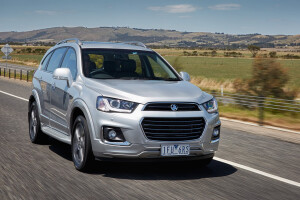 Advice
AdviceCar buyers guide is now the best time to buy a large SUV
In a new WhichCar series, we reveal upcoming updates or major changes for Australia’s most popular vehicles.
-
 News
NewsBest-selling SUVs could soon overtake passenger cars
2016 is on track to be the first year that Australians buy more SUVs than passenger vehicles, according to the latest VFACTS figures.
-
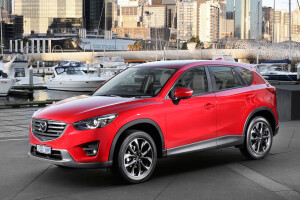 News
NewsBest-selling SUVs could soon overtake passenger cars
2016 is on track to be the first year that Australians buy more SUVs than passenger vehicles, according to the latest VFACTS figures.
-
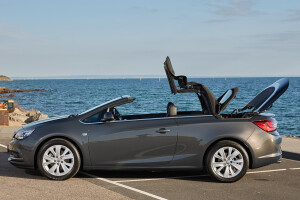
Can a convertible be a family car?
-
2016 Detroit Motor Show stars
-
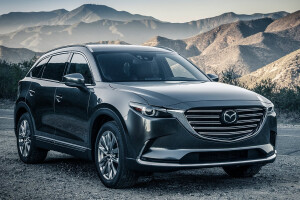
Crystal ball: New family cars to look for in 2016
-

Best Value SUVs 2015




